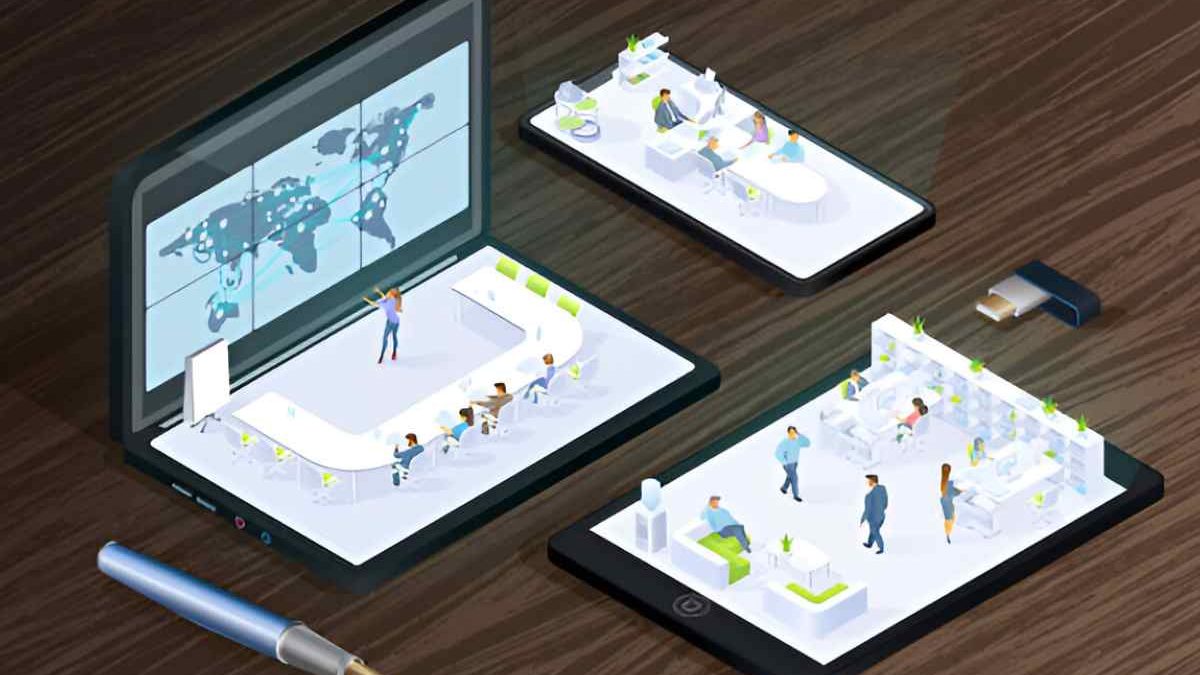An open-internet office offers immense potential for fostering collaboration, research, and innovation, especially in today’s fast-paced, innovation-driven world. However, this freedom comes with challenges, such as distractions, data security risks, and the need for accountability.
You can use culture-first strategies and tactics to balance between empowering employees to explore the internet freely and implementing controls to ensure a focused and secure environment. Let’s explore some practical tips to design an open-internet office that nurtures creativity while mitigating risks.
Table of Contents
Foster a Culture of Trust and Responsibility
Trust is the first principle of an open-internet office. Your employees should feel empowered to use the internet to perform critical business tasks and innovate while using it responsibly. To do this,first conduct regular workshops on data security, privacy, and ethical internet use. This way, your employees can learn how to use the internet safely without using restrictive policies.
Additionally, create forums, use town halls and anonymous surveys to get feedback on your office internet policies. As you receive feedback from your staff, you evolve your policies to meet employee needs and foster ownership..
Since overly restrictive internet filters stifle creativity, set clear expectations for your employees to self-regulate. For instance, allow your staff to access social media for research but give them proper time management guidelines.
Design Flexible and Adaptable Workspaces
The physical office environment can affect the interaction and performance of your staff. Open office designs can promote collaboration but lead to distractions. A flexible layout can support both creative collaboration and focused work.
For instance, you can use movable furniture, including desks on wheels or collapsible partitions. That enables your employees to reconfigure the workspace for different tasks. You can also use zoning principles. This way, you can create collaboration zones with whiteboards, round tables, and comfortable seating for brainstorming sessions.
You can also create quiet zones with soundproof rooms or booths for focused work or private calls. Moreover, you can have lounge-style areas with cafe-like seating for informal discussions or breaks.
For better personalization, you can also create alternative seating options for your staff. For instance, provide standing desks, yoga balls, kneeling chairs, or treadmill desks to meet the needs of unique personalities and promote physical health.
Encourage Constructive Dissent and Diverse Ideas
Constructive dissent means expressing disagreements or alternative viewpoints thoughtfully and respectfully. However, it focuses on solving problems—not on personal criticism. You can use constructive dissent to identify and surface blind spots, assumptions, and risks, enabling better collective outcomes.
Diverse viewpoints reduce groupthink, enabling you to make better decisions. They can also expose you to new ideas, uncover hidden employee risks and surface innovative solutions. Dissent can also help you build trust because of the openness of your workers. It also leads to better psychological safety and mutual respect among your staff.
Beyond that, it leads to better accountability. Healthy debate among your employees can help them sharpen each other, encourage ownership and improve interpersonal relationships. It also leads to better engagement in the workplace. When people feel heard and their unique ideas matter, motivation and morale improve.
Provide Tools for Focus and Privacy
In an open office, distractions like noise or interruptions can hinder productivity, especially for tasks requiring deep focus. You can provide tools to your teams to help them manage these distractions as efficiently as possible.
Some critical examples include:
- Offer headphones to employees to block out ambient noise, allowing them to focus in open areas.
- Use corporate web filtering solutions to reduce online distractions and improper internet use.
- Create small, soundproof spaces for private calls, confidential discussions, or concentrated work. That is critical especially for employees handling sensitive data or needing uninterrupted time.
- Designate specific times for quiet and focused work, during which noise is minimized across the office.
Model Desired Behaviors and Values Consistently
As a leader, exemplify the attitudes, actions, and principles you expect from your teams and the organization as a whole. It’s not a matter of just giving instructions, but about setting an example through consistent actions that inspire and motivate others. This fosters a positive culture and builds trust and credibility.
To do this, be consistent in your words and actions. It creates a sense of stability and reliability critical for building a strong team. Foster a positive culture that makes your team members more engaged, valued, and appreciated, leading to higher job satisfaction and productivity.
By embodying the behaviors and values important to the organization, you can help your team members understand what is expected of them and what the organization stands for. Moreover, demonstrating a strong work ethic, commitment, and perseverance can motivate others to approach their work with similar diligence.
Use Emotional Intelligence and Support
Emotional intelligence (EQ) is how you recognize, understand, and manage your own emotions—and those of others. In leadership and team settings, you can pair emotional intelligence with effective support to cultivate high trust, resilience, and performance.
Here are some key aspects of Emotional Intelligence:
- Learn how to recognize your staff and your own emotional triggers, strengths, and weaknesses, enabling you to act thoughtfully rather than react impulsively.
- By understanding the emotions and perspectives of your employees, you can provide authentic support, acknowledge challenges, and create a sense of belonging within the group.
- You can help your staff manage stress and stay calm under pressure, modeling constructive behavior even in challenging situations.
Also Read: All About Qugafaikle5.7.2: When Is Software Released?

